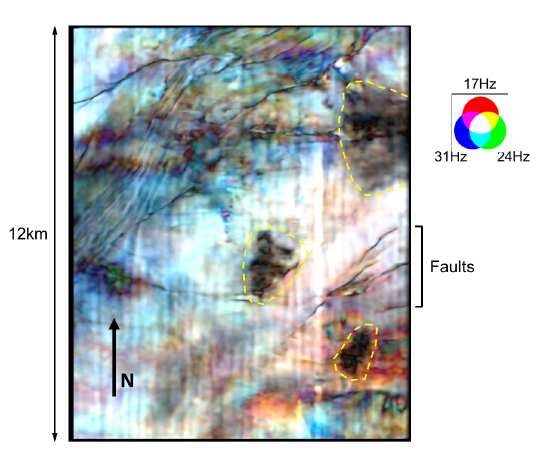Shallow Hazard and Gas Escape Systems Modelling from 3D Seismic
By Tom Wooltorton, GeoTeric
Shallow hazards in offshore oilfield developments often come in the form of gas chimneys and shallow gas emplacements, and can endanger the integrity of rig or platform foundations as well as ongoing drilling operations. Therefore, mapping them accurately prior
to any drilling or development operations can be critical for safety and reducing costs due to interruptions. An analysis was carried out to determine if 3D seismic, interrogated in a data driven but interpreter guided fashion, could be used to build a subsurface model revealing in detail where gas escape chimneys feed shallow gas accumulations, allowing the shallow hazards to not only be mapped accurately and risk reduced, but also inform the risk of trap leakage. Modern highresolution 3D seismic is often more than adequate to locate such features and capture their extents, and is available from the main reservoir interpretation at
no extra cost. Its large areal coverage can locate and prioritize targets for ultra-high resolution shallow hazard surveys. Additionally, complex feature morphologies can
be captured using semi-automated techniques that are impossible to define using manual interpretation on a vertical slice-based approach. A dataset over the Maari field, Taranaki basin, offshore New Zealand was used for the analysis. The survey has a lateral resolution of 25m by 12.5m and a vertical sample rate of 4ms. The reservoir is composed of several Miocene and Eocene pay sands layered in a four-way closure, and although the field was discovered in 1983, it was not produced from until 2009, due to complexities of commercialization requiring many injection and production wells. Issues included the
relatively shallow depth of the reservoir (1300m TVD), cold temperatures and waxy oil. In the Moki sandstone alone six horizontal production wells with ~11,000m of section have been drilled, accompanied by three deviated water injectors. This complexity increases the importance of a thorough subsurface understanding of hazards and their geometries, and the significance of shallow hazards has been identified throughout.
Download full article here.
(from Geophysical Society of Houston's February journal issue)


